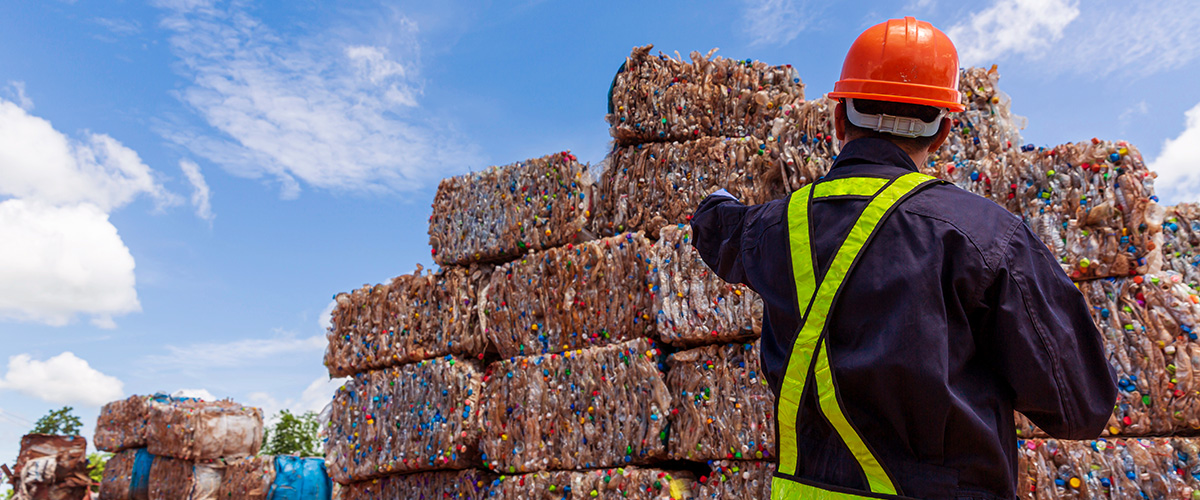As 2025 unfolds, the U.S. chemicals industry is gearing up for a year of solid progress and expanded potential. Atradius Underwriter, Angela Schulte gives more details on the strengths and challenges the industry is facing so far in 2025.
Key subsectors like basic chemicals, soaps/detergents, and paints/varnishes are driving growth, fueled by demand from industries such as automotive and construction. Monetary easing from the Federal Reserve and fiscal policies that are boosting consumer spending and industry activity support these gains. Legislation is influencing the industry’s development, with the CHIPS and Science Act, and the Inflation Reduction Act driving demand for chemicals used in applications such as semiconductors, lithium-ion batteries, and solar panels. The continued implementation of provisions from the Inflation Reduction Act is supporting innovation and sustainability efforts within the sector. Alongside steady consumer demand, these policies are contributing to a stable environment for growth.
Strengths
One of the industry’s greatest strengths lies in its access to domestic natural resources, particularly shale gas. Significant investments over the past decade have helped stabilize gas prices, create reliable supply chains, and lower production costs for chemicals like ethylene. These developments have given U.S. producers a competitive edge over their European and Asian counterparts, while the country’s near-capacity oil production continues to attract investment with its lower commodity prices. Additionally, U.S. chemical producers benefit from the competitive advantage of having relatively cheaper domestic shale gas as their feedstock. This enhances their cost efficiency and global competitiveness.
Operational resilience has also been critical to the industry’s success. Diversifying operations across geographies has allowed companies to minimize the impact of regional disruptions. Efforts to integrate business operations through digital transformation have further boosted efficiency and adaptability. Additionally, the sector’s diverse revenue streams have enabled it to handle significant disruptions. Some of these disruptions include the 2008 financial crisis, the COVID-19 pandemic, and the supply chain challenges of 2021.
Challenges
The industry is not without challenges. Tighter environmental regulations are placing pressure on companies to reduce greenhouse gas emissions, requiring innovation and investment in cleaner practices. Social concerns regarding plastic waste are also increasing, with growing demands to reduce single-use plastics and increase recycling. While plastics remain vital in global supply chains, these efforts to transition to eco-friendly and recyclable alternatives are gaining momentum. Over 80 global consumer goods and retail companies have committed to using 15% to 50% recycled content in their packaging by 2025, a shift that demands significant adaptation from the chemicals sector.
Rising ESG Factors
These social concerns and sustainability initiatives are shaping the trajectory of the U.S. chemicals industry as 2025 continues. The growing backlash against plastic waste, which accounts for approximately 8% of global waste, has led to reducing plastic production and increasing the focus on recycling. In response, there have been significant investments made in advanced recycling plants, reuse strategies, and alternatives to traditional plastics. These efforts are supported by advancements in technology and production efficiency within the plastics sector. As organizations align with sustainability goals, the industry is expected to grow rapidly, with profits increasingly tied to environmentally conscious practices. This shift reflects a broader commitment to balancing economic growth with environmental responsibility.
Plastics
How Does Credit Insurance Protect Plastics and Chemicals Businesses?
Explore how credit insurance can help your business stay alert for changing industry trends, help offset the risks in the supply chain, and more.
Learn MoreGet in Touch
Looking For a FREE Quote?
Obtaining a free Trade Credit Insurance quote or just some more information is fast and easy! Get in touch with us today.
Get Started Call 800-822-3223As 2025 continues, the U.S. chemicals industry is balancing innovation with resilience. Its ability to navigate dynamic social and economic pressures while leveraging its natural resource advantages and policy support will shape its path ahead. With sustainability at the forefront, the industry is well-positioned for a year of growth and transformation. Read our most recent report from February here.


